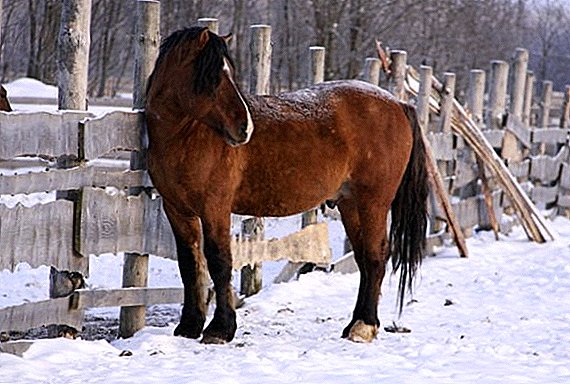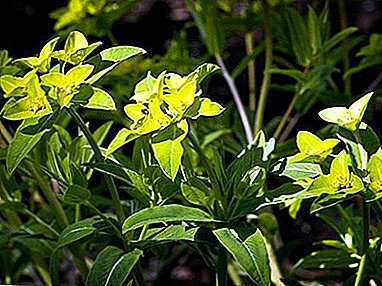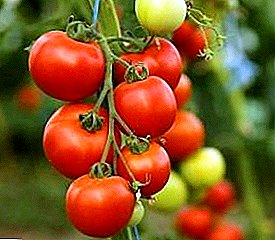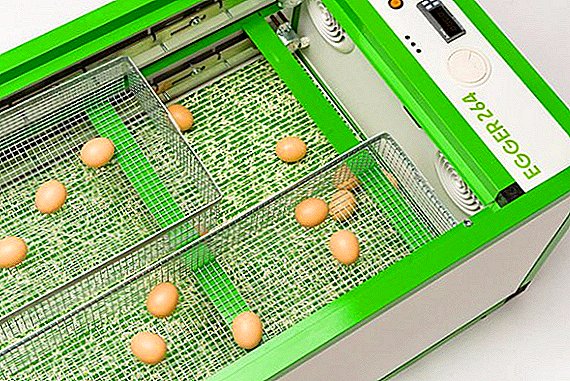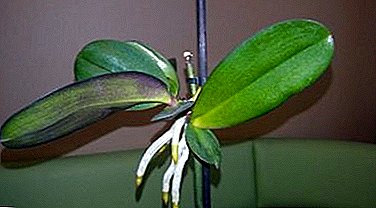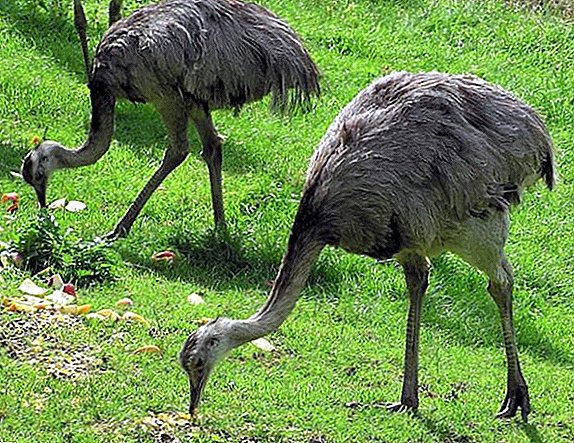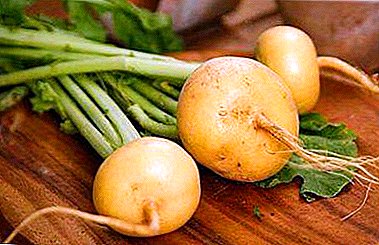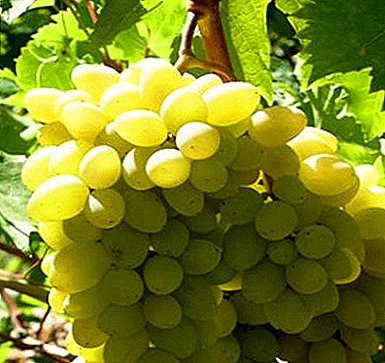
September is traditionally a “working” month for mushroom pickers. Satisfied "hunters" carry from the forest full buckets and baskets of a wide variety of mushrooms. The season of "quiet hunting" is not long, and the cut mushrooms are almost not kept fresh, therefore, upon returning from the forest, you must immediately begin to process them.
There are many ways to harvest mushrooms: pickle, fry, dry and freeze. Let's look at ways to prepare this favorite, popular, healthy and tasty snack.
Suitable views
 Almost all species of mushrooms that grow in the forest are subject to pickling. You can salt:
Almost all species of mushrooms that grow in the forest are subject to pickling. You can salt:
- Honey agaric.
- Champignon.
- Smooth
- Podoreshniki (they are plantains, seryanki, parsley).
- Valui.
- Russulae
- Chanterelles
- Whitefish.
- Ryzhiki.
- Submersibles (blackened, white, black and dry).
- Yellow mushrooms (scrubs, yellow waves).
- Black milk mushrooms (blacks).
- Milk.
- Maslata
- Mokhovikov (Polish, green, red and variegated mushrooms).
- Aspen birds.
- Brownberries.
- White mushrooms.
Tubular mushrooms are considered the best for salting. The category of the most delicious salted mushrooms include lachi. The tubular mushrooms are unusually tasty in salting, but for salting they use only strong and young ones, otherwise in the process of cooking the cap will become tasteless and flabby, and a specific crunch will be lost.
Preparatory stage
The most enjoyable stage of harvesting mushrooms for the winter is going to the forest behind them, settling the mushrooms in cans and sample the finished products.
The longest and most laborious process is the preparatory stage, which consists of sorting, cleaning and soaking.
Sorting
It is recommended to disassemble the mushrooms by species, since different mushrooms have different weeding times. In many old recipes it is assumed "joint weeding", but it is better to treat each type differently (they have different cooking and soaking times). It is possible to put mushrooms in one container for salting after preliminary preparation.
Cleaning
All mushrooms must be cleaned of dirt, remove existing damage and rinse well with water. Carefully enough it is necessary to wash out the median indentations of the caps. The legs are separated from the caps of the plate-type mushrooms. Using a not very stiff toothbrush, dirt is removed in the inner part between the plates. The skin from the caps is removed from the oil and syroezhek.
Cutting large mushrooms will be easier and more convenient during cleaning.
Maceration
Soak up the type of fungi that contain the milky juice (lachiks). The time of the procedure depends only on the degree of bitterness (causticity). Often adhere to this time:
- The violins, smoothies, podoreshniki, valui, moths, black milk mushrooms - from 2 to 5 days.
- Volnushki - up to 1-1.5 days.
- White mushrooms - up to 1 day. Some white mushroom pickers do not soak small white mushrooms.
- Russula and mushrooms - you can not soak.
How to pickle mushrooms?
After cleaning and pre-salting, you can breathe easier. The remaining salting process is quick and easy.
Mushrooms are salted in the following ways: dry, cold and hot.
Dry
 Differs dry way the least labor and convenience. This method is suitable only for syrozhezhek and Ryzhikov. Some mushroom pickers for dry pickling use podoreshniki, gladeshi and nihka. These mushrooms have a milky caustic juice, so you should not experiment, and before salting they should be soaked.
Differs dry way the least labor and convenience. This method is suitable only for syrozhezhek and Ryzhikov. Some mushroom pickers for dry pickling use podoreshniki, gladeshi and nihka. These mushrooms have a milky caustic juice, so you should not experiment, and before salting they should be soaked.
Ryzhiki are mushrooms of the first category.. They are tasty without any additional processing, so they are perfect for dry salting. All types of syroezhek, except for burning, can be salted without additional processing.
The method is called dry due to the fact that it differs from the cold "wet" method of the ability not to soak the mushrooms before salting. They are enough to clean the adhering debris with a soft cloth.
In syruzhekah need to remove the skin from the caps - it gives bitterness.
Cold
This method of salting mushrooms eliminates their heat treatment. Mushrooms are washed and cleaned, they are soaked with milk, and then the direct salting process begins.
Garlic, dill, bay leaf, etc. must be put on the bottom of the prepared container at the bottom of the prepared container. It is not recommended to add a lot of spices so as not to interrupt the taste of mushrooms.
Mushrooms are laid out in rows on caps, then they are poured with attested salt (40 - 50 g per 1 kg of mushrooms). After settling all the mushrooms, it is necessary to put a non-synthetic fabric on top, cover it with a circle and press down with oppression.
Under the yoke of mushrooms will secrete juice and settle every 2 - 3 days. Then you can add a new portion from the top until they no longer settle, and the entire capacity is filled.
Hot
 This method is relevant for plate and tubular mushrooms. Standard preliminary preparation is used, mushrooms should be cleared, washed. In the lamellar species, the legs are cut off, and if the caps are too round, they are cut. Pre-soaking is not necessary for tubular fungi. It is important to soak the crab before hot salting.
This method is relevant for plate and tubular mushrooms. Standard preliminary preparation is used, mushrooms should be cleared, washed. In the lamellar species, the legs are cut off, and if the caps are too round, they are cut. Pre-soaking is not necessary for tubular fungi. It is important to soak the crab before hot salting.
After the preliminary preparation process, the mushrooms must be boiled, which determines the name of the method.
Mushrooms should be put in salted boiled water (50 g per 1 l of water) and boiled.
Time counts from boiling with mushrooms.:
- Ryzhiki - boiling water 2 - 3 times.
- Chanterelles - from 15 to 20 min.
- Valui - from 30 to 35 minutes.
- Honey agarics - from 25 to 30 min.
- Mushrooms - from 10 to 15 min.
- Loadings and milk mushrooms - from 7 to 10 minutes.
- Volnushki and russula - from 10 to 15 minutes.
- Maslata, bovines, aspen mushrooms, boletus mushrooms, porcini mushrooms - from 10 to 15 minutes.
How to store?
Salted mushrooms are stored at a temperature from 0 to + 3 ... + 4⁰С. It is necessary to prevent the mushrooms from freezing, which can happen when storing blanks on a balcony in city apartments.
If they freeze, the mushrooms will begin to crumble, and their taste will be irretrievably lost.. Even a slight increase in temperature is undesirable, mushrooms can grow moldy and sour at a temperature of + 5 ... + 6С.
Care must be taken to always pickle mushrooms. In the case of evaporation, you must immediately add boiled water.
With the appearance of mold on top of the fabric is replaced by another. If you want to leave the already used fabric, then it needs to be washed and boiled. The oppression and the circle are thoroughly washed and boiled over 2 to 3 times.
To protect the fungi from mold, you can add to the brine sunflower oil, which must be boiled before adding. This will provide additional protection against the entry of germs and air.


